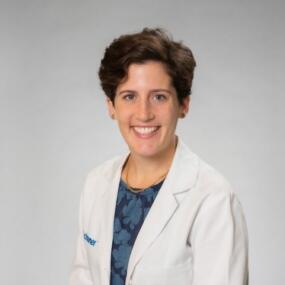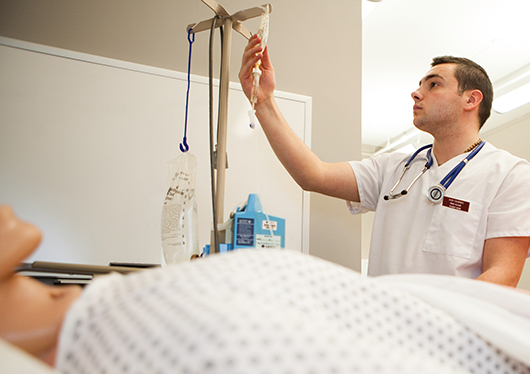Lizzy Mulcahy drew on her digital medical experience to bring remote pandemic patients closer
 It was near the start of the pandemic, shortly after Mardi Gras and New Orleans was beginning to feel the surge that Seattle had experienced before it. “Anyone working in healthcare was trying to come up with a way to ease the burden both for patients, for the health system,” recalls Lizzy Mulcahy, MSN-FNP-C, Manager of Clinical Innovation and Primary Nurse Practitioner with Ochsner Health, Louisiana’s leading healthcare educator. “So, our group which has a lot of background doing this remote monitoring started thinking, okay, what can we do to ease the burden on the hospital. We know that our peers in the hospital are really getting slammed right now. What could we do to be taking care of people at home who are safe to be at home?”
It was near the start of the pandemic, shortly after Mardi Gras and New Orleans was beginning to feel the surge that Seattle had experienced before it. “Anyone working in healthcare was trying to come up with a way to ease the burden both for patients, for the health system,” recalls Lizzy Mulcahy, MSN-FNP-C, Manager of Clinical Innovation and Primary Nurse Practitioner with Ochsner Health, Louisiana’s leading healthcare educator. “So, our group which has a lot of background doing this remote monitoring started thinking, okay, what can we do to ease the burden on the hospital. We know that our peers in the hospital are really getting slammed right now. What could we do to be taking care of people at home who are safe to be at home?”
At Ochsner, Mulcahy oversaw a clinical team with a large digital medicine program that had conducted work on diabetes, hypertension, cholesterol, COPD, and a population level genetics screening. The COVID program, which began in March, would be the largest project yet, ultimately serving over 5,700 patients and providing almost 3,000 consults with providers. In April, Mulcahy and her team started building the COVID program and early May, it was ready to launch. Patients either diagnosed with COVID in the outpatient setting or discharged from the hospital due to a COVID 19 infection were eligible to enroll.
“We really tried to target the higher-risk patients—those patients that a provider just wanted some extra eyes on, wanted to know that they were being checked in on, because one of the things early on, especially with COVID, was that people deteriorated so quickly so we felt like we just needed to put something in place to just keep an eye on them,” Mulcahy explains.
Twice daily, for two weeks, patients would get a notification to submit their heart rate, pulse ox, temperature and symptoms. If anything was problematic, the nurse on call team would contact the patient and nurse practitioners and P.A.s would perform a second-line check and do the next level of triage. The program benefitted patients who receive care without traveling to the hospital and practitioners who could monitor them from a distance.
“We felt like we helped support providers through an overwhelming and scary time as well when they were getting a ton of messages from patients who were scared at home. So, we were able to be that support both for the provider and for the patients,” says Mulcahy. “It was all about teamwork. The whole program really focused on teamwork between a lot of different teams and then also teamwork with the patient and their provider.”
In conversation with Regis College Assistant Professor Lawana Brown, Mulcahy, recognized by Johnson and Johnson among 15 nurses who disrupted healthcare through the pandemic, describes the secret to her team’s success (spoiler alert: think practice) and the one thing she wishes she knew when she was a nursing student that she learned along the way.



